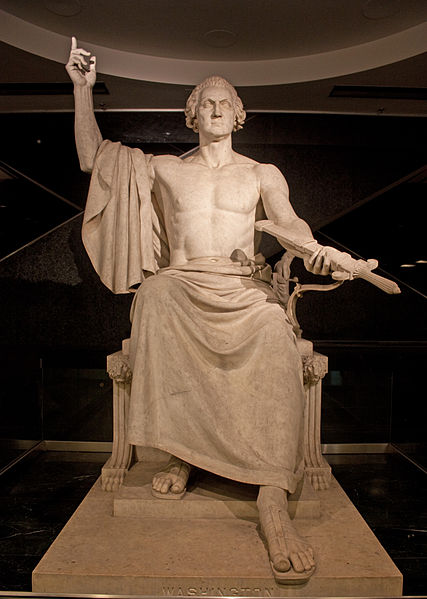Horatio Greenough was commissioned to create a statue of George Washington for the celebration of the 100th anniversary of the president’s birth. Drawing influence from classical art, he based his sculpture on Phidias’ representation of Zeus of Olympus, one of the Wonders of the World which has unfortunately been destroyed. The statue bears much symbolism; his comparison to Zeus denotes power, his right arm is gesturing toward Heaven, and he holds his sword out in an action of giving power to the American people after the Revolutionary War. The base reads a Latin inscription which translates, “Horatio Greenough made this image as a great example of freedom, and will not survive without freedom itself.” (See Latin text below.) The statue was originally intended to be displayed in the Capitol Rotunda, but it was met with controversy and was relocated to the Capitol’s east lawn. The people found the statue to be offensive because Washington wasn’t completely clad. Negative reactions continued and it was relocated a few more times before it made its way to the Museum of History and Technology, where it resides today.
Greenough was born on September 6, 1805 in Boston, Massachusetts. He was best known for his sculptures commissioned by the government. He was passionate about creating works about the ancient past and for symbolizing truth and realism.
Carved on the back of George Washington:
SIMULACRUM ISTUD
AD MAGNUM LIBERTATIS EXEMPLUM
NEC SINE IPSA DURATURUM
HORATIUS GREENOUGH
FACIEBAT^1
^1 “George Washington, (sculpture).”. Inventories of American Painting and Sculpture, Smithsonian American Art Museum. Retrieved August 2, 2011.
